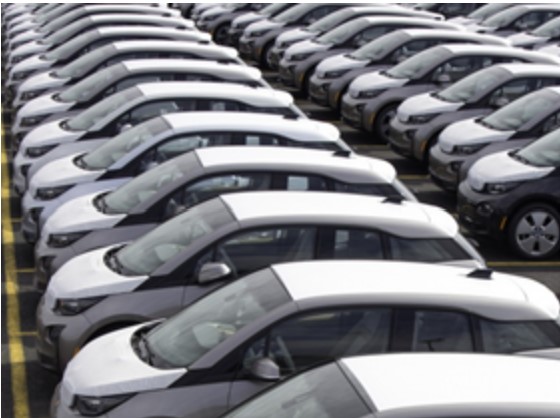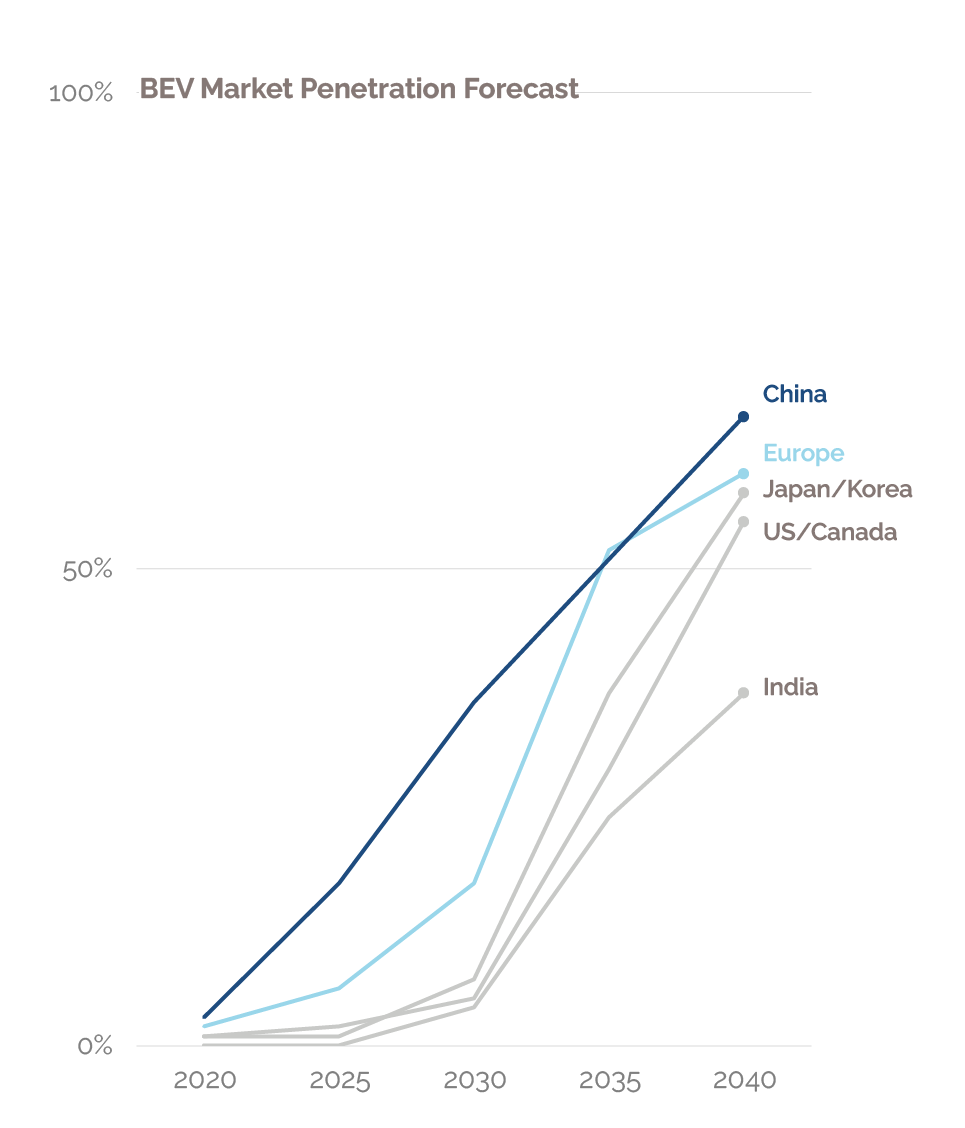The Situation
A Disruptive Threat Loomed

A market leader in emissions controls was considering major capacity expansion, but the C-suite and board members were concerned by reports of electric vehicle market strength. Given the significance of the investment decision on the line, the CTO sought an unbiased assessment of the true threat posed by electric vehicles over the coming decade.
The Approach
Boots on the Ground
We’re far from the first people to forecast the market for electric vehicles, but our client needed something more than a generic market report to make a confident investment decision. To ensure they were armed with the most nuanced and up-to-date information possible, we:
- Conducted original research across three continents
- Attended multiple international conferences
- Led over 50 interviews with OEMs, suppliers, R&D groups, government officials, regulations, organizations, and more
These efforts produced a new level of insight for our clients, particularly in China, where they had fairly strong knowledge of the overall automotive market and policy landscape but a limited understanding of details (number of models being developed, actual traction with customers, etc.).

Vehicle electrification is disrupting the whole automotive supply chain
Electric vehicles, autonomous driving, “peak car,” and other major trends will fundamentally alter the way we move over the next decade. Tier 1s, Tier 2s, and raw materials suppliers need to know what these changes mean for them. Which parts of their business are going to disappear? What new opportunities to innovate are arising? Where could growth in adjacent markets help to hedge risk?
The Outcome
CTO Pulled the Trigger
Prior to the start of our project, there had been a big disconnect between the C-suite and business leaders in terms of how they saw the electric vehicles market. The extensive data and in-depth insights we provided helped close the gap, bringing diverse stakeholders into alignment. Our client ultimately went ahead with the >$500M investment, convinced that the market for their products would remain strong enough in the near term to justify capacity expansion.
